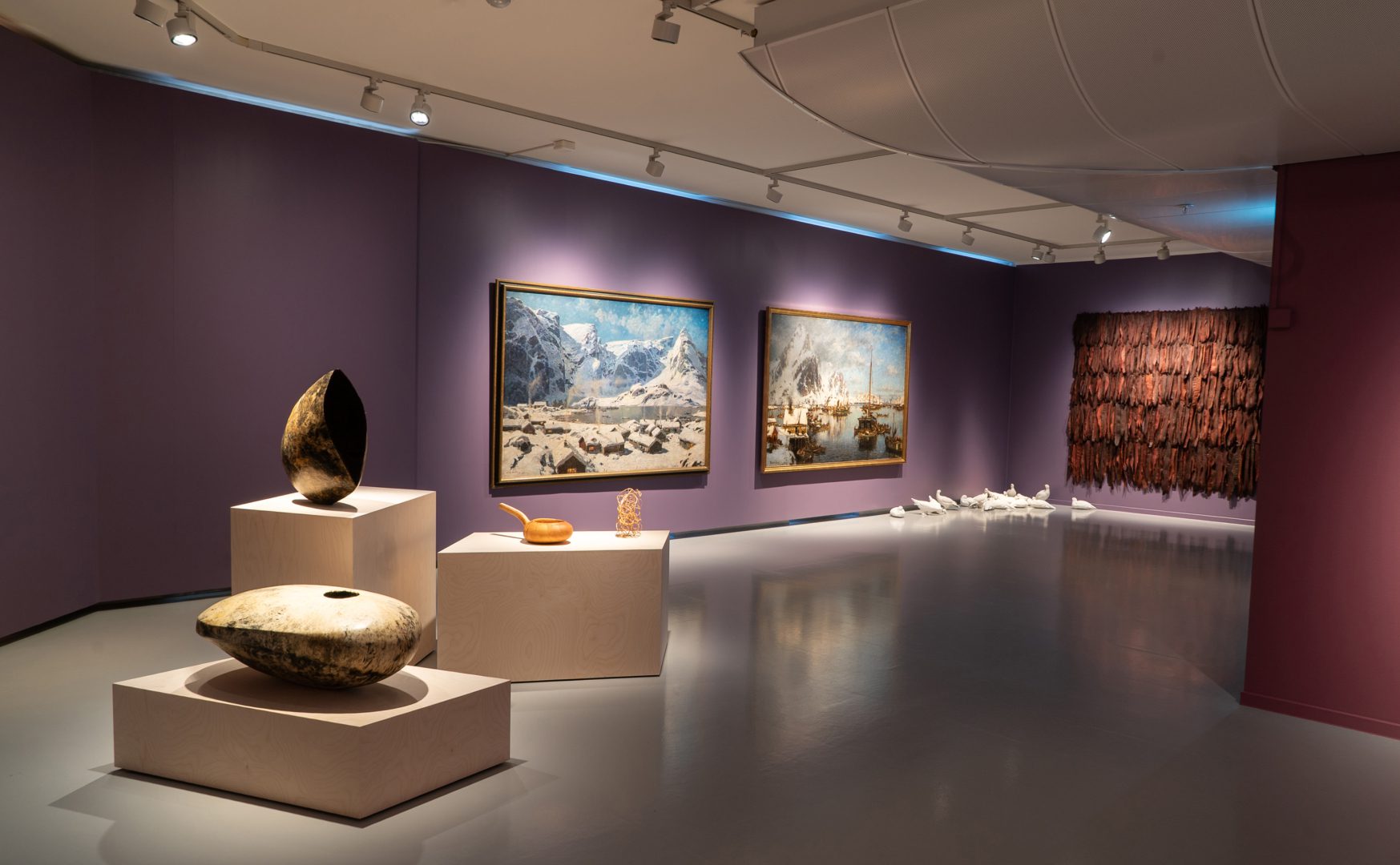To nature

The new sense of nature that emerged with Romanticism in Europe during the first half of the 19th century led artists to look northward to the Arctic, beautiful, and untouched nature. It was seen as exotic, fitting the Romantic spirit of the time, which centered on the individual, emotions, imagination, mysticism, and the magnificent, sublime nature. As a counterpoint to the Enlightenment's one-sided rational thinking, the Romantics believed that humans and nature were one, and that nature was ensouled. In the northern region, and for the areas of Sápmi and Ruija's own Sámi and Kven populations, these were not new ideas. In their cultures, they had traditionally lived close to, in, and with nature.

Several of today’s artists here in the North are concerned with nature. Like the Romantics, they are critical of a Western dualistic view that separates nature and culture, and they highlight the consequences for a nature under pressure. In the North, nature is particularly vulnerable to human intervention, with climate change, the warming of the polar ocean, extensive encroachment on nature, and the destruction of ecosystems. Ultimately, this will also threaten humans, who cannot exist without earth, air, water, fire, and the food we eat.
The exhibition shows works by the following artists:
J. C. Dahl, Franz Wilhelm Schiertz, Knud Andreassen Baade, Peder Balke, Christian Due, Hans Gude, Georg Saal, Otto Sinding, Gunnar Berg, Thorolf Holmboe, Ole Juul, Frants Diderik Bøe, Even Ulving, Iver Jåks, Rose-Marie Huuva, Åsne Kummeneje Mellem, Marit Landsend, Folke Fjällström, Ann Kristin Einarsen, Jon Ole Andersen, Solveig Ovanger, Kåre Aleksander Grundvåg, Tanya Busse.